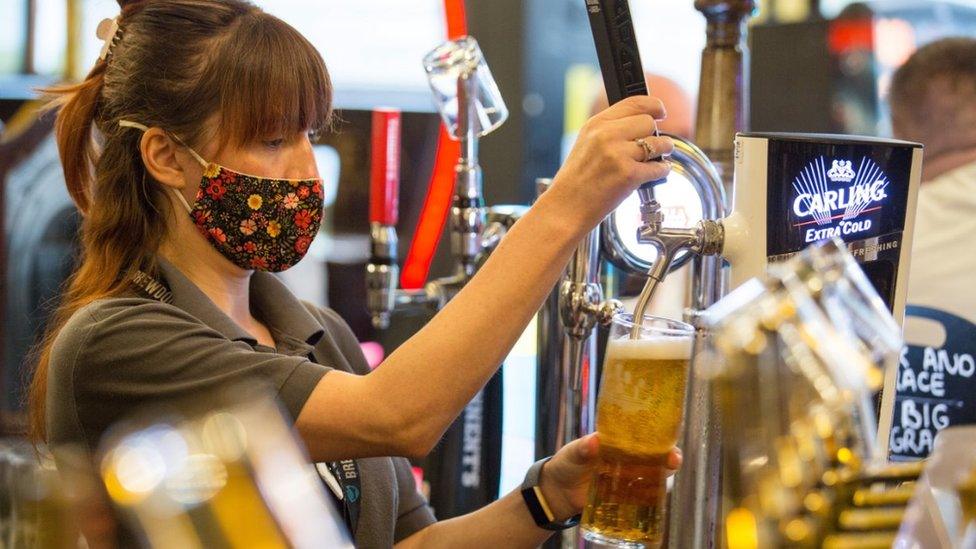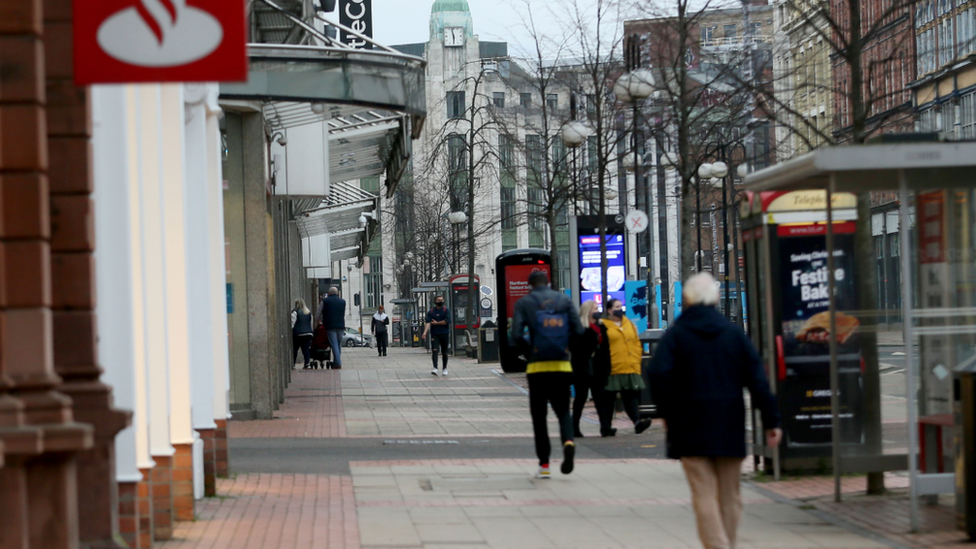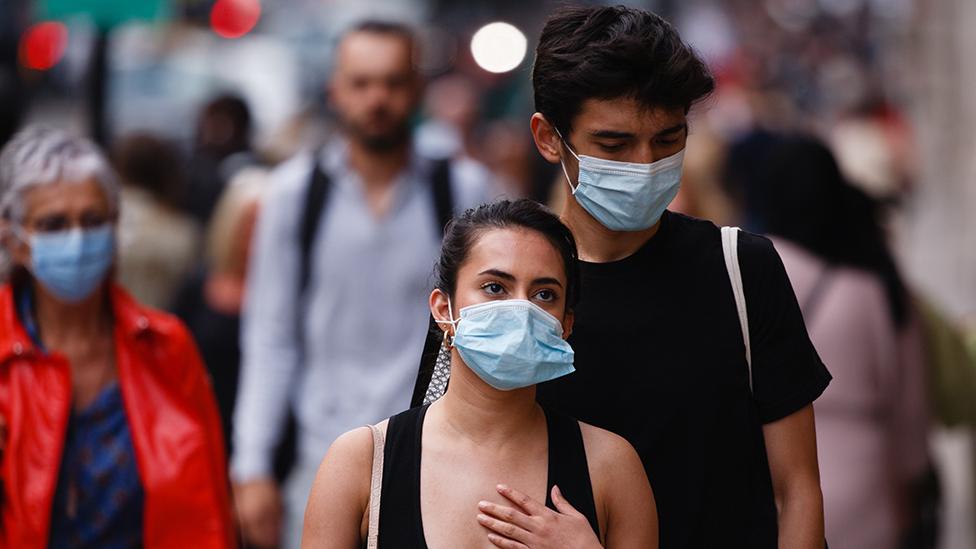Covid-19: NI's younger workers hit hardest by pandemic
- Published
- comments
Connor Lilley says his move from bar manager to trainee welder has been good
Younger age groups have been the hardest hit by job losses during the Covid-19 pandemic in Northern Ireland, official figures suggest.
While some people have gained and lost jobs, between November 2019 and November 2020, those under 35 experienced a net fall in job numbers.
The biggest impact was on the 16 to 24 age group.
Hospitality and retail, which are more likely to employ young people, has been one of the sectors affected most by restrictions.

Source: Labour Force Survey/Ulster University Economic Policy Centre
A year ago Connor Lilley was managing a new bar in the centre of Newcastle upon Tyne.
Then came lockdown, furlough, redundancy and finally relocation.
Today he is a trainee welder at the Terex engineering company in Dungannon, County Tyrone.
And his experience tells us a little of how the pandemic is affecting the economy in Northern Ireland and beyond.
He says he can't see himself returning to hospitality: "I've already applied for college at Dungannon Tec to learn TIG welding which is a different skill."
Those sorts of skills are in demand because the latest lockdown has barely affected manufacturing and some firms, particularly global exporters, are seeing strong demand.
Meanwhile Northern Ireland hospitality businesses don't yet have a reopening date.
Less service, more making
The latest economic output figures show those diverging fortunes.

Many businesses were closed by the restrictions which began on 26 December
The NI Index of Services for the final three months of 2020 suggest that output in hospitality and retail was down by almost 8% on the previous quarter as new lockdowns were implemented.
Meanwhile the Index of Manufacturing was down by just 0.6% as most businesses traded as normal.
This also shows up in the labour market statistics which, on one measure, suggest that during 2020 almost 10,000 jobs were lost in the service sector and fewer than 1,000 in manufacturing.

Furlough figures show slight fall
By Richard Morgan, BBC News NI business reporter
Figures from the Treasury indicate 106,500 people in Northern Ireland remained on furlough as of 28 February - a slight fall from the month before.
The Coronavirus Job Retention Scheme, which pays the wages of those who cannot work because of the pandemic, has been extended until September.
The scheme pays up to 80% of an employees salary, up to a maximum of £2,500 a month.
The provisional data shows 54,800 women were furloughed here compared to 51,600 men.
The data from HMRC also shows more employers availed of the scheme as NI entered a strict lockdown at Christmas.
Causeway Coast and Glens and Newry, Mourne and Down councils had the highest uptake of the scheme as of the end of February.
The data also shows that, in January, the wholesale and retail sector had the highest number of employments furloughed.
In the rest of the UK the accommodation and food services were the sectors using the scheme more than any other industry.

Hitting the young hardest
The service sector is much bigger but even in percentage terms it experienced a larger drop with a 1.6% decrease in jobs compared to 1% for manufacturing.
These job losses are not shared evenly across society and one very obvious trend is the disproportionate impact on young workers.
Ulster University economists Mark Magill and Marguerite McPeake have produced a comprehensive overview of the most recent labour market figures., external
They conclude that the largest falls in employment over the past year are among the under-25 age group.
Employment has fallen by 27,000, which equates to a decrease of 24%.
They say young people are being "squeezed from two sides."
"Firstly, existing young people in the labour market are more likely to be working in sectors which have been adversely affected during the crisis (e.g. retail and hospitality).
"Secondly, full-time students have been unable to find employment opportunities to supplement their study."
That second point is important when it comes to interpreting the wider labour market figures.
People in full time education who can't find work are classified as economically inactive rather than unemployed.
The Ulster University study nonetheless finds reasons to be optimistic: the furlough has prevented mass unemployment, hiring levels have remained surprisingly robust and job-to-job moves have not fallen as sharply as in previous recessions.
With vaccine rollout continuing they say it is time to plan for a jobs recovery which acknowledges that the pain has not been evenly shared.
"The statistics paint a picture whereby some groups will require more support than others - notably those with low level qualifications, the self-employed and the young. "
- Published23 March 2021

- Published26 January 2021

- Published28 September 2020

- Published14 June 2020
